
|







(alphabetical and illustrated) Introduction | A - 1 | A - 2 | B - 1 | B - 2 | C - 1 | C - 2 | C - 3 | D | E | F G - H | I - J - K | L - M | N - O | P | Q - R | S - 1 | S - 2 | T | U - V - W - X - Y - Z |
|
|
|
|
| an objective opinion or description of characters or events occurring in the film, presented from an omniscient point of view by a commentator; the commentator's voice comes from off-camera, and is presented on the soundtrack as a voice-over; also refers to one of the added features on various DVDs in which a cast member, director, film critic, or film historian 'comments' on the film in some way |  Example:
the newsreel "News on the March" prologue to Citizen
Kane (1941); also the commentary provided by critic Roger Ebert,
or film directors Peter Bogdanovich or Martin Scorsese on special editions
of DVDs Example:
the newsreel "News on the March" prologue to Citizen
Kane (1941); also the commentary provided by critic Roger Ebert,
or film directors Peter Bogdanovich or Martin Scorsese on special editions
of DVDs |
|
| a film made up of shots, scenes, or sequences from other films | Example: Chuck Workman's compilation film - 100 Years at the Movies (1994) | |
| a plot event that complicates or tightens the tension of a film | ||
| the musician who creates (writes or adapts) the film's musical score; contrast to a conductor (who directs the orchestra's performance of the score), or a lyricist (who writes a song's words) | 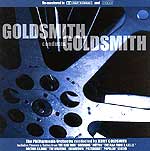 Example: Jerry Goldsmith, composer of original music for Patton (1970), Chinatown (1974), Poltergeist (1982), and many more excellent films. |
|
| refers to the arrangement of different elements (i.e., colors, shapes, figures, lines, movement, and lighting) within a frame and in a scene |  Example:
the clever composition of frames in The Sixth Sense (1999). Example:
the clever composition of frames in The Sixth Sense (1999). |
|
| see earlier CGI | ||
(rock or comedy) |
a film that records the live concert performance of musician(s), a band/group, or stand-up comic(s); concert films are often edited over the course of many performances and/or staged for the camera with multiple set-ups, and can be considered pseudo-documentaries; a rock concert is aka rockumentary | Examples: famous musical rock concert films include Monterey Pop (1968), The Rolling Stones: Gimme Shelter (1970), Let It Be (1970), Woodstock (1970), George Harrison's "Concert for Bangladesh" (1972), The Last Waltz (1978), Stop Making Sense (1984), and Madonna: Truth or Dare (1991); famous stand-up comedy concert film performances include Richard Pryor: Live on the Sunset Strip (1982) and Bill Cosby, Himself (1983) |
(or continuous) |
refers to action moving through multiple
locations without interruptions; it usually
refers to the degree to which a film is self-consistent without errors,
jump cuts, or mis-matched shots and details; the
final edited structure of a completed film includes events or
scenes/sequences arranged as if they had occurred continuously, when, in
fact, they were shot out of sequence; a system of editing was
developed in the early 20th century to provide a continuous and clear
movement of events/images in a film;
a continuity
cut refers to a editing cut that takes the viewer seamlessly, unobtrusively,
and logically from one sequence or scene to another, to propel the narrative
along; a blooper or flub is a continuity error |
 Example:
Error in continuity in Pretty Woman (1990) during the breakfast
scene, in which Julia Roberts is first eating a croissant that quickly
switches to a pancake; or the view of a gas cartridge on a Roman chariot
in Gladiator (2000). Example:
Error in continuity in Pretty Woman (1990) during the breakfast
scene, in which Julia Roberts is first eating a croissant that quickly
switches to a pancake; or the view of a gas cartridge on a Roman chariot
in Gladiator (2000). |
| an actor (both stars and bit players) who has a contractual commitment or agreement to a studio/producer/company | 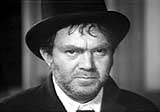 Examples:
minor contract players included Ward Bond, Thomas Mitchell (pictured
here as drunken Doc Boone in Stagecoach (1939)),
Henry Travers, Wallace Ford, Beulah Bondi Examples:
minor contract players included Ward Bond, Thomas Mitchell (pictured
here as drunken Doc Boone in Stagecoach (1939)),
Henry Travers, Wallace Ford, Beulah Bondi |
|
| refers to the difference between light and shadow, or between maximum and minimum amounts of light, in a particular film image; can be either high contrast (with a sharp delineation between the bright and dark areas) or its opposite low contrast; color can also be contrasted; see also chiaroscuro | ||
| the expected elements in a type of film, without question, thought, or judgment | 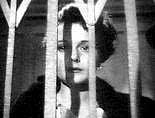 Example: Film
noir is expected to be a dark, pessimistic, shadowy-filmed
story about human betrayal or corruption, such as The
Maltese Falcon (1941) (pictured); documentaries are
expected to usually include factual information and interviews Example: Film
noir is expected to be a dark, pessimistic, shadowy-filmed
story about human betrayal or corruption, such as The
Maltese Falcon (1941) (pictured); documentaries are
expected to usually include factual information and interviews |
|
| refers to landmark legislation in the late 30s designed to protect a child actor's earnings, by depositing some of the minor's earnings in court-administered trust funds that the child receives when he/she reaches the age of majority; named after child actor Jackie Coogan |  Example:
as a result of The Kid (1921) opposite Charlie Chaplin, 6-year
old child actor Jackie Coogan was one of the most highly-paid actors
in Hollywood, but lost his earnings to his exploitative parents Example:
as a result of The Kid (1921) opposite Charlie Chaplin, 6-year
old child actor Jackie Coogan was one of the most highly-paid actors
in Hollywood, but lost his earnings to his exploitative parents |
|
(or wardrobe) and costume design |
refers to the garments or clothing worn by actors/performers in a film; a costume (or wardrobe) designer researches, designs, and selects the costumes to be appropriate to the film's time period, the characters, their location, and their occupations, whereas the costumer (or stylist) is responsible for acquiring, selecting, manufacturing, and/or handling the clothing and accessories; a costume drama is a film set in a particular historical time period, often with elaborate costuming |  Example: Superman:
The Movie (1978) (pictured); also films with important
wardrobe elements include Cabaret (1972), 3
Women (1977), Ed Wood (1994), and Hedwig and the
Angry Inch (2001) Example: Superman:
The Movie (1978) (pictured); also films with important
wardrobe elements include Cabaret (1972), 3
Women (1977), Ed Wood (1994), and Hedwig and the
Angry Inch (2001) |
| a drama and/or mystery story, in which the main protagonist is a lawyer, and a majority of the drama and dramatic action takes place in a courtroom setting; the plot revolves around the preparation of a trial and its result of guilt or innocence | 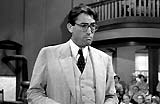 Examples: The
Life of Emile Zola (1937), Adam's Rib (1949), 12
Angry Men (1957), Witness For the Prosecution (1957), Anatomy
of a Murder (1959), Compulsion (1959), Inherit
the Wind (1960), Judgment at Nuremberg (1961), To
Kill a Mockingbird (1962) (pictured), The Verdict (1982),
A Soldier's Story (1984), Suspect (1987), The Accused (1988), A
Cry in the Dark (1988), Reversal of Fortune (1990), A
Few Good Men (1992), Philadelphia (1993), The People Vs. Larry
Flynt (1996), Primal Fear (1996) Examples: The
Life of Emile Zola (1937), Adam's Rib (1949), 12
Angry Men (1957), Witness For the Prosecution (1957), Anatomy
of a Murder (1959), Compulsion (1959), Inherit
the Wind (1960), Judgment at Nuremberg (1961), To
Kill a Mockingbird (1962) (pictured), The Verdict (1982),
A Soldier's Story (1984), Suspect (1987), The Accused (1988), A
Cry in the Dark (1988), Reversal of Fortune (1990), A
Few Good Men (1992), Philadelphia (1993), The People Vs. Larry
Flynt (1996), Primal Fear (1996) |
|
| refers to all the shots, including closeups and reverse angles, that a director takes in addition to the master shot, to make up the final product; to have proper coverage means having all the proper scenes, angles, lightings, close-ups, and directions | ||
| a camera shot taken from a large camera dolly or electronic device (a piece of apparatus, such as a crane), resembling a extendable mechanical arm (or boom), that can raise the camera up in the air above the ground 20 feet or more; the crane allows the camera to fluidly move in virtually any direction (with vertical and horizontal movement), providing shifts in levels and angles; crane shots usually provide some kind of overhead view of a scene |  Examples:
the opening, long-take sequence in Altman's The Player (1992) was
shot with a crane, as was the classic 3-minute opening credits sequence
of Touch of Evil (1958); also, the
shot in High Noon (1952) where the Marshal
is left in the empty street prior to his confrontation with the four
gunman, to emphasize his isolation, rejection and vulnerability; and
the spectacular shots using remote cranes in the car-chase sequence
of To Live And Die In L.A. (1985). Examples:
the opening, long-take sequence in Altman's The Player (1992) was
shot with a crane, as was the classic 3-minute opening credits sequence
of Touch of Evil (1958); also, the
shot in High Noon (1952) where the Marshal
is left in the empty street prior to his confrontation with the four
gunman, to emphasize his isolation, rejection and vulnerability; and
the spectacular shots using remote cranes in the car-chase sequence
of To Live And Die In L.A. (1985). |
|
| refers to superimposed screen titles or text intended to move across, up, down, or diagonally on the screen |
 Examples:
the impressive opening crawl of text at the start of all
Star Wars films; or the closing,
vertical-scrolling of textual screen credits at the end of many films Examples:
the impressive opening crawl of text at the start of all
Star Wars films; or the closing,
vertical-scrolling of textual screen credits at the end of many films
|
|
| in general, this term refers to the text appearing on screen - composed of a list of technical personnel, cast, and production crew of a film; specifically, it refers to the list of names and functions of persons and corporations contributing and responsible for the artistic or intellectual content of a film, such as: "Story by...", "Screenplay by...", "Photography by...", etc.; sometimes distinguished from the cast (the performers in front of the camera); see also front (or opening) credits, end (or closing) credits, or (beginning or end) titles. |
|
|
| refers to those involved in the technical production of a film who are not actual performers | ||
the period of highest tension just before the climax of a film (there can be more than one); the point at which events reach their highest level of tension |
||
(or film critic, film reviewer) |
an individual who writes and/or publishes a review of a film from either an artistic or entertainment point of view. Film reviews often analyze and discuss a film's details, its content and characters, a critique of the performances, camera work, directing, editing, production, and script; film critics are usually more philosophical and theoretical than film reviewers or commentators; film criticism refers to the analysis of the narrative, historical and stylistic characteristics of film; 'critics' is sometimes abbreviated as crix. |  Example:
One of the best known and most knowledgeable film critics of all time, Chicago
Tribune's Roger Ebert, known for his 'thumbs-up' and 'thumbs-down'
reviews. Example:
One of the best known and most knowledgeable film critics of all time, Chicago
Tribune's Roger Ebert, known for his 'thumbs-up' and 'thumbs-down'
reviews. |
| the editing technique of alternating, interweaving, or interspersing one narrative action (scene, sequence, or event) with another - usually in different locations or places, thus combining the two; this editing method suggests parallel action (that takes place simultaneously); often used to dramatically build tension and suspense in chase scenes, or to compare two different scenes; also known as inter-cutting or parallel editing. |  Examples:
Porter's The Great Train Robbery (1903),
D. W. Griffith's The Birth of a Nation (1915) and
the finale of Griffith's Intolerance (1916),
where the chase to save the pardoned hero from execution in the modern
story is cross cut with Christ's procession to Calgary; also the scene
in The Godfather (1972), where the baptism
of Michael Corleone's godson is cross cut with the violent elimination
of Corleone's multiple underworld rivals. Examples:
Porter's The Great Train Robbery (1903),
D. W. Griffith's The Birth of a Nation (1915) and
the finale of Griffith's Intolerance (1916),
where the chase to save the pardoned hero from execution in the modern
story is cross cut with Christ's procession to Calgary; also the scene
in The Godfather (1972), where the baptism
of Michael Corleone's godson is cross cut with the violent elimination
of Corleone's multiple underworld rivals. |
|
| refers to a fading technique that occurs in two stages: (1) fade to black, and then (2) fade to next scene; a cross-fade always involves a black or blank screen, whereas a dissolve does not | ||
and cross-over appeal |
a film or production that is made for one audience, but may easily 'cross-over' to another unexpected audience; also refers to a film, actor, or production that appeals to different demographic groups or age groups and can move between two or more distinct franchises; see also hybrid |  Examples:
Cross-over films include Mira Nair's Monsoon Wedding (2001) -
basically a film with Indian-oriented content that had wide international
appeal and crossed multi-cultural barriers, and the same was true for Bend
It Like Beckham (2002), Y Tu Mamá También (2001,
Mex.) and Barbershop (2002). Similarly, the animated smash Finding
Nemo (2003) appealed to both children and adult audiences, for different
reasons. Cross-over stars include Humphrey Bogart as a romantic lead
and as a hard-boiled detective, or James Cagney as a song-and-dance man
and as a tough guy. Examples:
Cross-over films include Mira Nair's Monsoon Wedding (2001) -
basically a film with Indian-oriented content that had wide international
appeal and crossed multi-cultural barriers, and the same was true for Bend
It Like Beckham (2002), Y Tu Mamá También (2001,
Mex.) and Barbershop (2002). Similarly, the animated smash Finding
Nemo (2003) appealed to both children and adult audiences, for different
reasons. Cross-over stars include Humphrey Bogart as a romantic lead
and as a hard-boiled detective, or James Cagney as a song-and-dance man
and as a tough guy. |
| a shot or image of a large group of people (often extras) in a film; CGI is now often used to film large crowd shots, to avoid huge costs associated with hiring extras |  Example:
A crowd shot on the streets of NY from King Vidor's silent classic The
Crowd (1928) Example:
A crowd shot on the streets of NY from King Vidor's silent classic The
Crowd (1928) |
|
| a signal or sign for an actor to begin performing, from either another performer, from the director, or from within the script; a cue is often the last word of one character's line(s) of dialogue, when another performer is expected to 'pick up their cue' to speak. | ||
| a device (cards, scrolling screen, teleprompter, or other mechanism) printed with dialogue provided to help an actor recite his/her lines; an electronic cue card is called a (tele)-prompter; derogatively called idiot cards or idiot sheets. | ||
| usually a non-mainstream film that attracts a small, but loyally-obsessed group of fans, and remains popular and worshipped over many years; cult films have limited but special appeal, and often have unusual or subversive elements or subject matter; they are often replayed for repeat viewings and audience participation (and group identification) as midnight movies; not to be confused with B-films (not all cult films are B-films) | 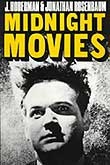 Examples:
most cult films are from the horror and sci-fi genres,
such as The Rocky Horror Picture Show (1975), Attack of the
Killer Tomatoes! (1978), Repo Man (1984); also Harold and
Maude (1971), Pink Floyd: The Wall (1982), the films of Roger
Corman or David Lynch, etc. Examples:
most cult films are from the horror and sci-fi genres,
such as The Rocky Horror Picture Show (1975), Attack of the
Killer Tomatoes! (1978), Repo Man (1984); also Harold and
Maude (1971), Pink Floyd: The Wall (1982), the films of Roger
Corman or David Lynch, etc. |
|
(or cutting) |
an abrupt or sudden change or jump in camera angle, location, placement, or time, from one shot to another; consists of a transition from one scene to another (a visual cut) or from one soundtrack to another (a sound cut); cutting refers to the selection, splicing and assembly by the film editor of the various shots or sequences for a reel of film, and the process of shortening a scene; also refers to the instructional word 'cut' said at the end of a take by the director to stop the action in front of the camera; cut to refers to the point at which one shot or scene is changed immediately to another; also refers to a complete edited version of a film (e.g., rough cut); also see director's cut; various types of cuts include invisible cut, smooth cut, jump cut (an abrupt cut from one scene or shot to the next), shock cut (the abrupt replacement of one image by another), etc. |  Director yelling cut! |
| a brief shot that momentarily interrupts a continuously-filmed action, by briefly inserting another related action, object, or person (sometimes not part of the principal scene or main action), followed by a cutback to the original shot; often filmed from the POV of the character and used to break up a sequence and provide some visual relief, or to ease the transition from one shot to the next, or to provide additional information, or to hint at an impending change; reaction shots are usually cutaways; cross-cutting is a series of cutaways and cutbacks indicating concurrent action; a cutaway is different from an insert shot. |
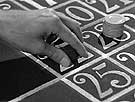 or the view of the roulette number being bet upon in Casablanca (1942) |
|
| a sub-genre of science fiction, derived from combining the terms cybernetics and punk, and related to the digital or information technology society (referring to the proliferation of computers, the online world, cyberspace, and 'hacking'); this sub-genre also incorporates classic film-noirish characteristics into its style - traits include alienation, dehumanization, the presence of counter-cultural anti-heroes, darkness, dystopia, and corruption; heavily influenced by the novels of Raymond Chandler; also associated with the work of writer William Gibson and his 1984 novel Neuromancer |  Examples: TRON
(1982), Blade Runner (1982), Johnny
Mnemonic (1995), Strange Days (1995), The
Matrix (1999). Examples: TRON
(1982), Blade Runner (1982), Johnny
Mnemonic (1995), Strange Days (1995), The
Matrix (1999). |
|
| the curved, seamless, floor-to-ceiling backdrop or background used in studio sets, often to represent the sky when outdoor scenes are shot inside | ||